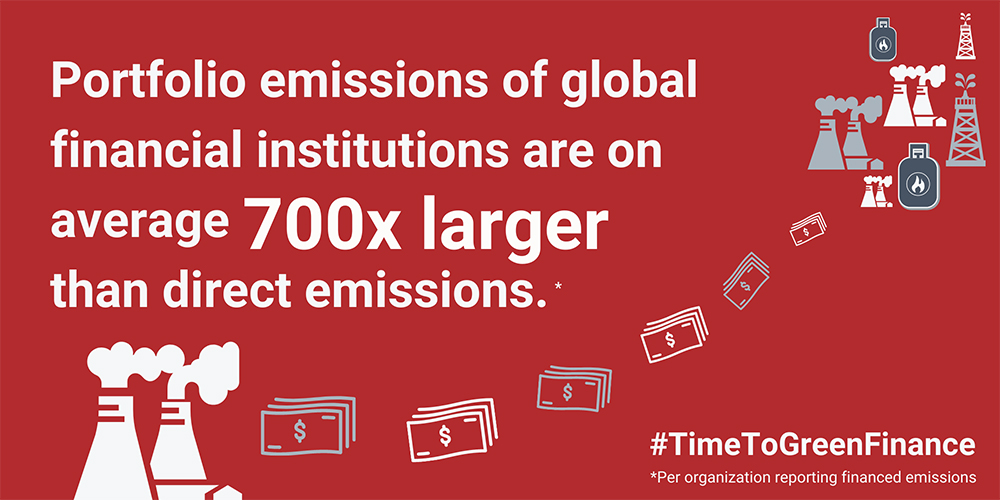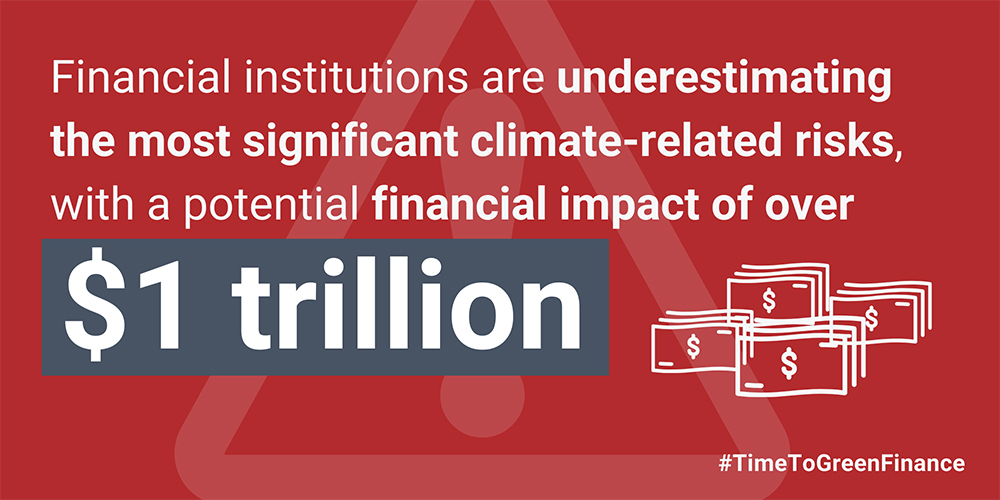The Time to Green Finance
CDP Financial Services Disclosure Report 2020
The finance sector is critical to achieving a net zero future. Our flagship report finds that portfolio emissions are over 700x larger than direct emissions - and the risks of inaction are huge. Financial institutions must urgently decarbonize their portfolios, by disclosing the impact of their financing activities, setting science-based targets and aligning all financing activity with the Paris Agreement.
For the first time ever, CDP has analyzed the environmental impact of financial institutions’ portfolios and operations together, based on self-reported data from global asset managers, asset owners, insurers and banks.
A diverse group of 332 financial institutions – representing US$109 trillion of assets – disclosed through CDP’s inaugural climate change questionnaire for the financial services sector in 2020.
Our data reveals that portfolio emissions of global financial institutions are on average over 700x larger than direct emissions, per organization reporting portfolio emissions.

Financial institutions are underestimating the most significant climate-related risks – those associated with financing.
Most institutions are not reporting their credit risks (65%), such as borrowers’ default on loan repayments and most (74%) are not reporting market risks, such as stranded assets and financial asset price devaluation.
Yet, the reported risks associated with financing have a much higher potential financial impact than the reported operational risks (US$1 trillion combined versus just US$34 billion).

Despite the growing momentum of financial institutions announcing net zero targets, our data shows less than half of disclosing financial institutions and only 27% of insurers report actions to align portfolios with limiting global warming to well-below 2 degrees Celsius.
Furthermore, while the majority of organizations reported some board-level oversight of climate-related issues, this mostly focuses on direct operations rather than financing activities.
Measuring impacts and risks is essential for managing them. Yet only 25% of financial institutions disclosing through CDP are currently reporting portfolio emissions – a critical data gap. And while 70% of financial institutions assess their portfolios for climate-related risks, just one in two assess their portfolios for water security risks and only 40% for forests-related risks.
The message is clear – financial institutions who are not currently measuring their financed emissions must start doing so, now, to understand their overall climate-impact and the risks they face. The real economy transition will require a massive amount of capital directed at decarbonizing the economy, which only the finance sector can facilitate and provide.Emily Kreps, Global Director of Capital Markets, CDP
Financial institutions are increasingly focused on sustainable finance products – 76% identify opportunities in areas such as sustainability-linked loans, green and transition bonds, sustainable investment funds and insurance solutions, which are worth up to US$2.9 trillion .
The net zero transition requires enormous amounts of financing which only the capital markets can provide, and organizations should look for climate-related opportunities.
However, the sector must do more to understand its overall climate impacts and the risks faced from its financing activities.
The finance sector is critical in achieving the net-zero transition – and disclosure is key. Financial institutions will be among some of the first organizations required to disclose in line with the Taskforce on Climate-related Financial Disclosures (TCFD) framework, as regulators move towards mandatory disclosure.
Financial institutions must urgently engage with companies and decarbonize their portfolios, through collective engagement initiatives such as CDP’s Non-Disclosure Campaign and Science-Based Targets Campaign.
Through disclosure, ambitious target-setting and aligning all activities with the Paris Agreement, the sector can decarbonize at scale and finance the transition to a net-zero, resilient, thriving economy
